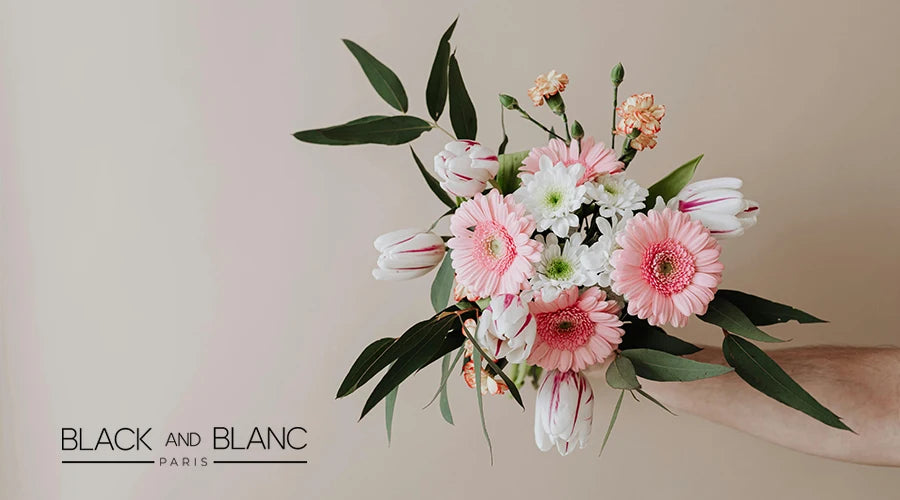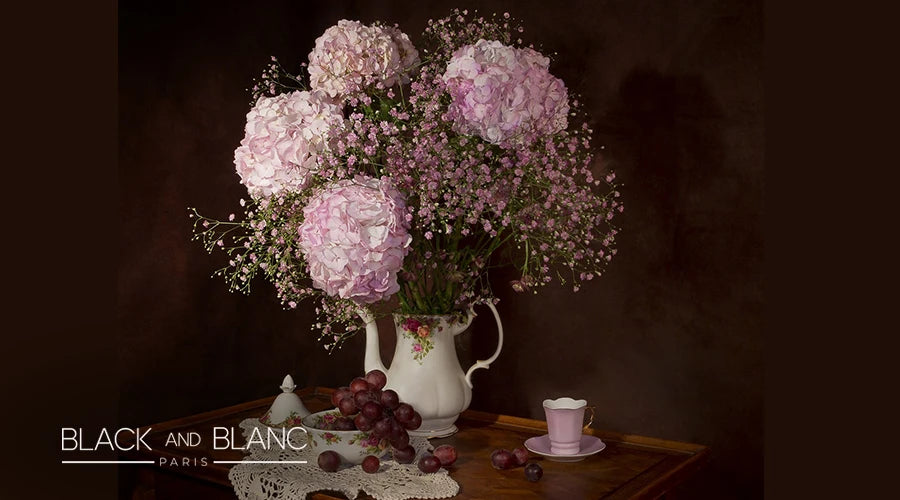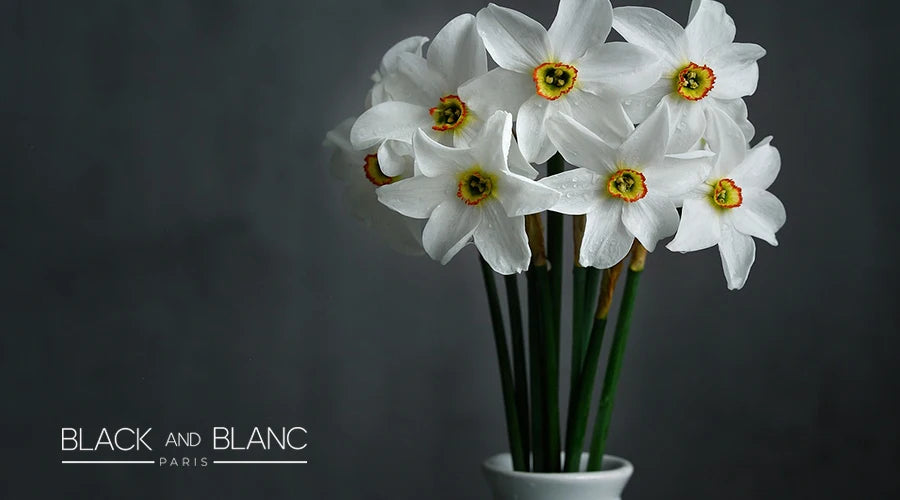The Art of Flower Arranging
For centuries, flowers have entranced humanity with their innate elegance - vibrant hues, delicate textures, and captivating fragrances. More than objects of beauty, arranging blooms has evolved into a revered tradition across cultures.
From elegant Japanese ikebana to the lavish beauty of Chinese floral styling, this craft marries nature's beauty with human creativity.
Here, we explore the captivating realm of professional floral design—its rich history, diverse customs, and contemporary mastery. We uncover the profound symbolism, intricate skills, and artistic philosophies that transform simple blooms into breathtaking works of art.
Japanese Art of Flower Arranging (Ikebana)

Ikebana, the Japanese discipline of flower arranging, holds centuries of cultural significance. At its core, ikebana celebrates nature's ephemeral yet graceful beauty. Rooted in Buddhist, Shinto, and wabi-sabi philosophies, it transcends mere aesthetics.
Ikebana encourages purposeful presence, appreciating each bloom's unique form and imperfections. Floral elements represent the natural world's delicate balance and ever-changing cycles.
Arranging flowers became a spiritual exercise - a meditative appreciation of nature's transient yet remarkable gifts. Minimalist compositions highlight flowers' inherent shapes, colours and lines. Simplicity and empty space allow these natural qualities to shine.
Exploring Ikebana Styles
Ikebana encompasses various arranging styles, each with its own philosophy and techniques.
The formal rikka style adheres closely to strict patterns, often incorporating symbolic elements representing heaven, earth and humanity. Its compositions are highly structured.
In contrast, the more free-flowing shoka style encourages greater creative expression. Arrangements highlight the natural growth patterns and intrinsic beauty of the floral materials.
The nageire style celebrates simplicity and spontaneity. Stems are placed in a more casual, natural-looking manner within the vessel.
Then there's the moribana style, designed to be viewed from multiple angles. These low, compact designs bring a sense of elegant minimalism to tabletop settings.
Selecting Floral Materials
In the art of ikebana, carefully selecting floral materials is paramount. Artists thoughtfully curate each stem, blossom and frond based on the season and natural availability. Their choices celebrate the ever-changing cycles of growth, bloom and decay in the living world around us.
Classic ikebana materials brim with symbolism and beauty. Delicate cherry blossoms evoke spring's ephemeral magic. Stately, chrysanthemums convey the vibrance of autumn. Verdant pines, bamboo and lotus, conjure ancient woods and serene ponds.
Many ikebana styles incorporate withered or dried materials. They represent the equally poignant beauty found in life's final stages before renewal begins again.
Chinese Art of Flower Arranging (Kado)
While the Japanese art of ikebana values minimalism and natural harmony, the Chinese discipline of kado embodies a more lavish, symbolic approach to floral design.
Steeped in ancient Chinese spirituality and culture, kado celebrates the bounty and variety found in nature. Arrangements incorporate a wealth of blossoms, branches, fruits and other botanical elements. These extravagant compositions overflow with intricate artistry and lavish visuals.
Central to kado is auspicious symbolism imbued into every component. Specific flowers, colours and accessories represent desired virtues like prosperity, fertility and longevity. Meticulous structure conveys sacred meanings aligned with Confucian, Buddhist and Taoist principles.
While ikebana relies on Open spaces and few materials, kado overflows with vibrant abundance. Yet beneath the lush exterior lies an equally disciplined philosophy. Kado's complex rules dictate precise flower substitutions, angles and proportions. Each sensory detail holds a deeper purpose.
Regional Variations and Styles

Kado evolved into a vibrant tapestry of regional styles and techniques, each reflecting the unique cultural influences and natural surroundings of the region where it was born.
In the Lingnan style, graceful, flowing lines evoke the romantic gardens of southern China. Masterful artists incorporate intricate symbolism - auspicious fruits, branches and blooms conveying prosperity, fertility and joy.
In contrast, the naturalistic Southern School style showcases floral materials' innate, unadorned beauty. These organic compositions celebrate each element's form, growth patterns and delicate imperfections with humble elegance.
The tascape pictorial style goes further, sculpting entire scenic vistas within the arrangement. Carefully trained branches, blossoms and accessories recreate winding rivers, misty mountains and lavish palace scenes.
Steps to Arranging Flowers
Step 1: Decide on a Design and Color Scheme
Begin your floral journey by dreaming up the overall design and colour harmony. This initial vision will guide your choice of blooms and greenery, ensuring a cohesive, visually captivating arrangement.
Maybe you prefer the elegant simplicity of a monochromatic palette - showcasing blush pink peonies alongside softer muted roses. Or perhaps you crave vibrant contrast, like jewel-toned calla lilies punctuating a bed of lush greens.
You could also draw inspiration from the season itself. Let nature's current palette shape your creation, combining freshly budding branches, springtime daffodils and hyacinths in all their colourful glory.
Step 2: Prepare the Flowers
Gently examine each blossom and stem, removing any unsightly blemishes. Trim leaves and petals that appear wilted or damaged. This meticulous grooming allows the flowers' natural perfection to shine.
Next, recut the stems with a sharp, angled snip. This fresh diagonal cut maximizes water intake so your blooms drink deeply. Immediately place the trimmed stems into a pristine vase or cool water bucket. Add a few drops of nutrient-rich flower food to further prolong their radiance.
Consider the types of flowers and their specific needs. Hardy, thick-stemmed varieties like sunflowers may need more aggressive trimming to open up their hydrating pathways. Delicate orchids and poppies require a featherlight touch to protect their papery petals.
Step 3: Choose the Vessel
The container sets the stage for your floral composition. Choose thoughtfully - the right vase elevates your blooms into arresting natural art. Consider your flowers' varieties, forms and growth habits.
Elegant, straight-sided glass showcases structured, upright beauties like tulips and roses. They can freely stretch their stems skyward. Low, weighty ceramic bowls anchor lush, cascading arrangements of vines and trailing blossoms.
Rustic woven baskets perfectly complement garden-gathered wildflowers. Their organic shapes mirror nature's unbridled beauty. Contemporary geometric ceramics provide a sharp, modern contrast to exotic tropical varietals.
Step 4: Create a Sturdy Foundation
Once you have chosen your botanical vessel, establish a solid structural base. This framework supports your arrangement as you craft its sculptural form. A simple grid of criss-crossed floral tape across the vase opening works wonders for many styles.
Stems nestle neatly into the grid as you build layers of blooms and leaves. This steady scaffolding holds even the most intricate, top-heavy arrangements.
Another clever technique uses natural supports like chicken wire balls or classic floral frogs. These maintain stability while cradling stems at all angles.
To create your overarching framework, always begin with larger, sturdier branches or hardy blooms. Then, intertwine more delicate elements among this backbone. With a proper foundation in place, your floral artistry remains vibrantly intact.
Step 5: Build the Arrangement
With your pristine blossoms and vases prepped, it's time to let your creativity flow as you construct the arrangement. Begin by fashioning a lush, naturalistic base using trailing greenery like eucalyptus, ivy or feathery fern fronds.
Arrange these verdant stems in an asymmetrical, inverted triangle shape. This provides both grounding horizontal elements and lifting verticals. The greenery creates a vibrant backdrop for your focal flowers to shine.
Now add your statement blooms—those large, showstopping varieties like peonies or sunflowers. Cluster them in visually appealing odd numbers to evoke nature's unpredictable beauty. Three or five works charmingly.
Harmonize the design by tucking in smaller, delicate accent bloomers like baby's breath or waxflower. Finally, incorporate textural accents, perhaps spiky thistles or velvety scabiosa. These surprising elements seduce the eye.
Step 6: Finish and Display
With your floral canvas complete, refresh each petal with a light misting - recreating nature's morning dewdrops. Top the vase with water and add floral nutrients to help your handiwork thrive longer.
Now, simply find the perfect prominent spot to showcase your botanical artistry. An entry table, mantel or clear counter lets this living, fragrant sculpture claim its well-deserved spotlight.
Essential Floral Arranging Tools
Creating long-lasting, professional floral masterworks requires the right tools at hand. Some of the most essential tools for floral arranging include:
-
Sharp snips/clippers for trimming stems
-
Floral tape for securing stems
-
Kenzans/floral frogs to support stems
-
Waterproof floral clay to anchor accents
-
Assorted vases and vessels in various sizes/shapes
-
Floral wire for wiring delicate blooms
Advanced Techniques
As your skills bloom, explore advanced arranging methods that breathe new artistic life into botanical compositions. These specialized techniques unlock fresh dimensions of creativity:
-
Bundling: Grouping stems together in cohesive, structured clusters. Creates sculptural, pod-like shapes.
-
Layering Textures: Blending diverse floral materials and textures. Builds unmatched visual depth and dimension.
-
Wiring Flowers: Using floral wire to support and shape delicate blooms. Allows intricate posing into garlands and headpieces.
Floral Styles Beyond Ikebana and Kado

While Japanese ikebana and Chinese kado hold revered cultural significance, the floral arranging realm overflows with rich global diversity. These prestigious Eastern disciplines represent just the beginnings of an infinitely inspiring journey.
European Romanticism
Across the continent, opulent floral styling developed alongside ornate architecture and lavish garden landscapes. Lush roses, peonies and hydrangeas overflowed in abundant splendour. This theatrical approach created immersive botanical experiences fit for royal courts.
Contemporary Evolutions

As art and design modernized, so did floral expression. Clean, minimalist lines, abstract sculptural forms and stark simplicity began defining new aesthetics. Surprising materials like twigs, seeds and even plastics entered the mix. These avant-garde creations upended traditional notions of "arrangements" - reinventing nature's potential.
Cross-Cultural Fusions
Some of today's most innovative floral artists pull inspiration from multiple global sources. They mindfully blend Eastern and Western techniques, marrying disciplined simplicity with lush expressionism. These intercultural pieces respectfully interweave diverse materials, colours and structural components. The results feel simultaneously timeless and radical, rooted in ancient artistry yet undeniably modern.
Cultural Significance and Modern Applications
For centuries, arranging flowers into symbolic offerings has woven profound cultural meaning. Ancient Egyptians crowned rulers with floral grandeur. Meticulously crafted blooms graced sacred Buddhist altars. Each petal conveyed intentional purpose - beauty, renewal, and humble gratitude for nature's bounty.
Final Words
The ageless craft of flower arranging transcends boundaries, drawing all cultures into its captivating realm. Whether exploring minimalist ikebana or indulging in kado's extravagant opulence, one truth remains - our kinship with nature's beauty.
When we slow ourselves to appreciate art's fleeting yet eternal allure, we honour the most timeless artistic tradition of all—nature itself, our first inspired muse. Floral arranging celebrates life.
Frequently Asked Questions
What is the difference between ikebana and kado?
Ikebana is the Japanese style of minimal, balanced arrangements. Kado is the more intricate Chinese method using many types of plants and objects in symbolic ways.
What are the essential tools needed for flower arranging?
Must-have flower-arranging tools include clippers, tape, buckets, wire, and clay to hold stems securely in vases.
How do I choose the right container for my flower arrangement?
Choose a container based on the flowers' sizes, shapes, and growth. Straight vases suit tulips, while heavy pots stabilize tall blooms. The vase should match the arrangement's look.
What are some advanced techniques in flower arranging?
Bundling, stacking, and wiring flowers allow creative arrangements. Bundling groups stems together. Stacking layers adds depth. Wiring supports delicate blooms or builds complex patterns.
What is the cultural significance of flower arranging?
Flowers often represent spiritual ideas across societies. Specific arrangements carry symbolic meanings of concepts like love, mourning, or celebrations. Arranging plays roles in rituals, adding offerings and decorations and expressing cultural identities.





